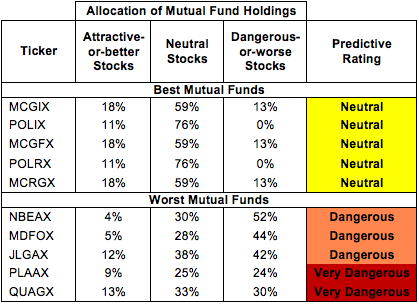The Best ETF for LargeCap Growth
Post on: 29 Март, 2015 No Comment

Recent Posts:
The Best ETF for Large-Cap Growth
There are so many ETFs out there, I thought I’d start a weekly series on finding the right ETF for your portfolio, depending on what kind of portfolio you are keeping. Not all ETFs are created equal, and investors have a broad array of funds to choose from. Heck, if you want an ETF that invests only in clown cars, you could probably find one.
Source: ©iStock.com/s-a-m
[Ed. note: We have yet to discover a clown car ETF.]
This week, I’m unpacking the best ETFs for large-cap growth stocks.
According to ETFdb.com, there are 23 large-cap growth ETFs, ranging in expense ratio from 0.07% to 1%. They are definitely not created equal, as their YTD returns range from 0.4% to 7.3% as of Oct. 21.
Best ETFs: PowerShares QQQ (QQQ)
For aggressive investors, it isn’t surprising that the best ETF in the large-cap growth category is also the best-performing ETF. The PowerShares QQQ Trust, Series 1 ETF (QQQ ) is up 7.3% YTD, is the most liquid, and has the largest asset base. That’s because this ETF mirrors the Nasdaq 100 index, with a 0.2% expense ratio ($20 per $10,000 invested).
The Nasdaq 100 index is home to all the largest tech firms, and tech traditionally outperforms in a bull market. You’ll find all the top names here: Apple (AAPL ), Microsoft (MSFT ), Google (GOOG ), Intel (INTC )and Amazon (AMZN ).
The top 10 holdings take up 50% of the ETF, though, and that’s why this is purely for aggressive investors.
Best ETFs: Vanguard Growth Index Fund ETF (VUG)
For the more conservative investor, have a look at the Vanguard Growth Index Fund ETF (VUG ). It’s a very large ETF that’s also very liquid, and only carries a 0.09% expense ratio. The VUG is up 3.7% YTD, keeping pace with S&P 500. I like it for its sector diversity, with 24% tech, 20% consumer services, 12% healthcare, 11% industrials, 8% energy, and the rest divided among consumer goods, financials, real estate, communications, and basic materials.
VUG posts an earnings growth rate of 19.1%, easily making it one of the best ETFs for growth investors. Its P/E is high relative to that growth rate, at 25.8, but that’s what you get with growth stocks. This isn’t a value hunt for PEG ratios under 1. You should expect to pay a premium, and you will. This is somewhat balanced by the diversification 370 stocks are in the ETF.
Best ETFs: Guggenheim S&P 500 Pure Growth ETF (RPG)
The best ETF for all-around large-cap holdings is the Guggenheim S&P 500 Pure Growth ETF (RPG ). I like the diversification and the fact that its less tech-dependent both make it an ideal long-term portfolio holding.RPG is up 4.9% YTD.
The breakdown is 26% consumer cyclical, 18% health care, 15% tech, 14% financials, 9% industrial, 7% energy, 7% consumer defensive and a smattering of other sectors. It has a reasonable expense ratio of 0.35%.
It cheats a little because it has 37% mid-cap exposure, but I’ll accept it because I like the diversity. I also like the unusual choice of names instead of going for the obvious. Here we have Southwest Airlinese (LUV ), Vertex Pharmaceuticals (VRTX ), Keurig Green Mountain (GMCR ), Netflix (NFLX ) and Chipotle (CMG ).
As of this writing, Lawrence Meyers was long AAPL, AMZN and DIS. He is president of Asymmetrical Media Strategies. a crisis PR firm, and PDL Broker, Inc.. which brokers financing, strategic investments and distressed asset purchases between private equity firms and businesses. He also has written two books and blogs about public policy, journalistic integrity, popular culture, and world affairs. Contact him at pdlcapital66@gmail.com and follow his tweets at @ichabodscranium .
Lawrence Meyers owns shares of AAPL, AMZN and DIS.














